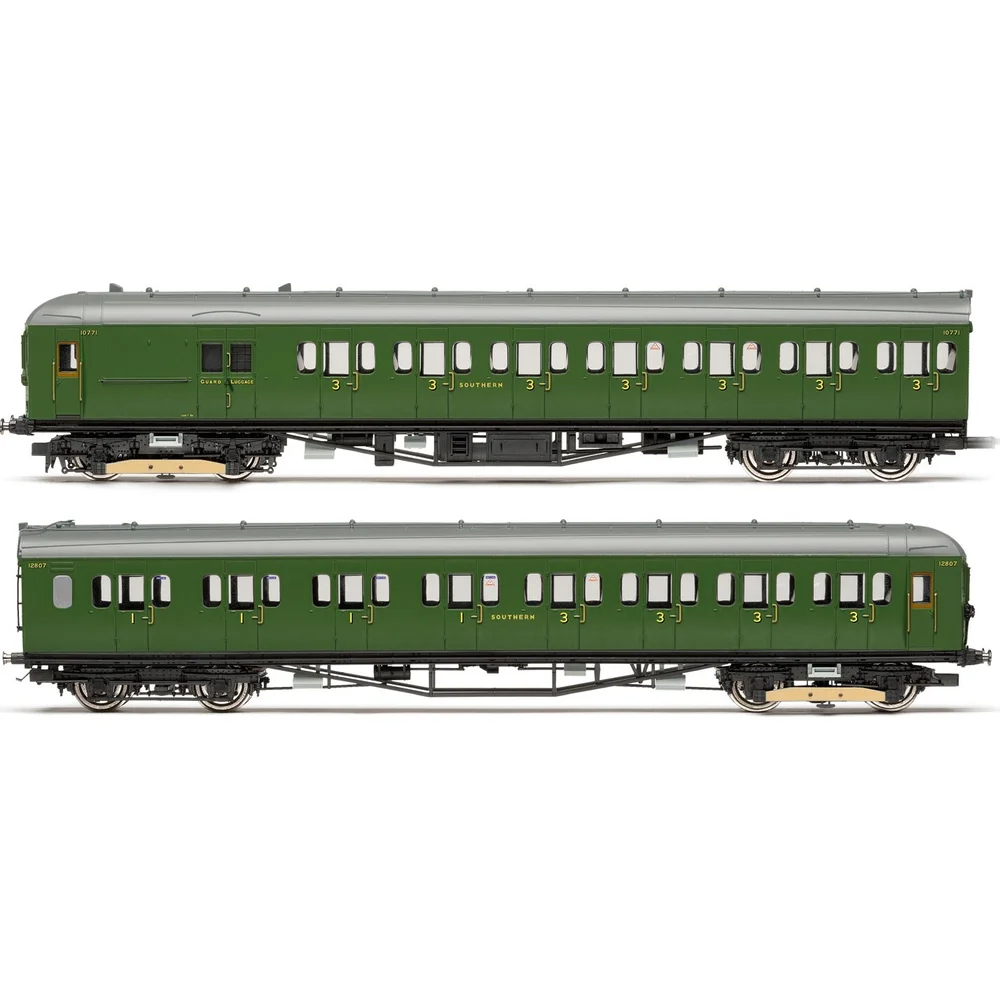Hornby R3260
Southern Railway 2-HAL 2653 Southern Railway Green
Class & Prototype
- Class: Southern Railway 2-HAL
- Traction: Electric Multiple Unit
- Built: 1938-1955
- Total Built: 100
- Running Number: 2653
The Southern Railway's 2-HAL electric multiple units were purpose-built for the 1939 Kent Coast electrification, serving commuter routes from London Victoria to Maidstone and Gillingham until 1971. These 100 two-car units featured distinctive domed ends, "Half Lavatory" configuration, and pioneered innovative split-working operations at Swanley. Powered by twin 275hp traction motors with 75mph capability, they established operational patterns still used by modern Southern Rail services. Despite 33 years of reliable service, no units survived preservation, making Hornby's OO gauge models the only way to experience these historically significant trains today.
Operator & Livery
- Operator: Southern Railway
- Livery: Green
- Era: 3 - The big 4 – LMS, GWR, LNER & SR
The Southern Railway (SR), formed in 1923 through the amalgamation of numerous railway companies, became Britain's most passenger-focused railway company. The three principal constituents were the LSWR, LB&SCR, and SE&CR, alongside several smaller railways including the Plymouth, Devonport and South Western Junction Railway and various light railways. Operating 2,186 miles across southern England, the SR pioneered extensive third-rail electrification and developed distinctive locomotive classes under Chief Mechanical Engineers Maunsell and Bulleid. The company's malachite green and olive green liveries, Art Deco architecture, and premium passenger services like the Golden Arrow established new British railway standards. Nationalised in 1948, the SR's innovations in electric traction and passenger comfort influenced modern railway practice. Today, SR locomotives remain highly popular with railway modellers for their elegant designs, varied operational roles, and distinctive Southern Railway heritage that connected London with the Channel ports and southern resorts.
